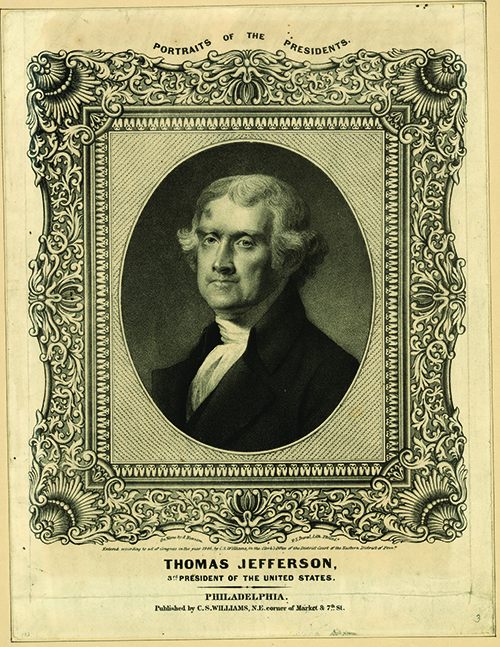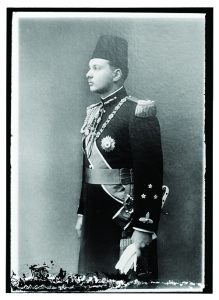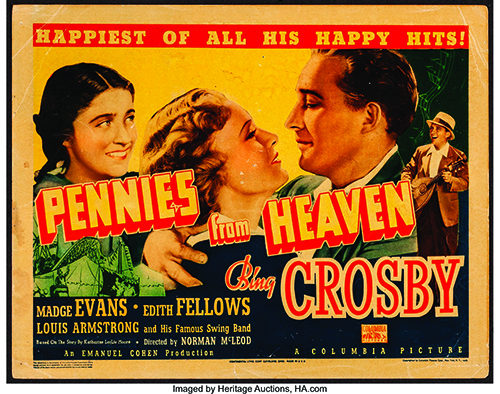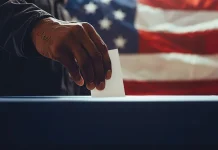
By Joshua McMorrow-Hernandez
Editor’s Note: This is the first of a two-part series. Enjoy Part II >>>
Numismatics In the Media Spotlight
When coins make it into the general media, our hobby wins, right? Numismatic luminaries and the coins they collect have been in the spotlight for ages, with the hobby’s A-list collectors and most legendary rarities stepping out for the rest of the world to see.
The hobby and its cast of colorful characters and rare treasures seem ready-made for the media. And what else would you expect, given the many flamboyant, larger-than-life collectors who have risen through our hobby with their prized six-, seven-, and even eight-figure trophies? Coin collecting is known as the hobby of kings and queens, and by no means is that whimsical hyperbole. After all, some of the first coin collectors were royalty and noblepersons of ancient times who enjoyed collecting the coinage of their time.
Numismatics is a far more democratic pursuit today, a hobby enjoyed by those of every income, occupation, and background. Yet it’s still a favorite pastime of the rich, including the entertainment world’s movers and shakers.

Among the greatest collectors of yesteryear included King Farouk of Egypt, President Thomas Jefferson, actor Buddy Ebsen, director Penny Marshall, and American composer Hoagy Carmichael. Then there was Louis Eliasberg, a Baltimore financier who in 1950 finished what was then considered a complete collection of United States coins; it was featured in Life magazine and in the 1970s exhibited at the United States Mint in Philadelphia.
Many of today’s biggest stars are also coin collectors, including actor James Earl Jones, actresses Nicole Kidman and Kate Hudson, hockey great Wayne Gretzky, and ex-Beatle Paul McCartney. Yet, despite our hobby’s star power, the hobby can do a better job at gaining new recruits. Surely, numismatics has its occasional brush with fame, making major headlines when a major seven-figure rarity crosses the auction block. So, how has the hobby been portrayed in the media?
As Seen On TV
Collectible coins make frequent television appearances. Think of all those infomercials with slick-haired, fast-talking salespeople hawking proof sets, gold coins, and modern commemorative coins for many times their fair market value. But beyond the overpriced home-shopping television adverts and minute-long daytime television slots selling gold-plated tokens with depictions of the current president for $19.95 (plus a separate shipping and handling fee!), where do coins figure on television?
“Dennis The Menace,” a television spinoff of the Hank Ketcham newspaper comic strip, is one of the many mid-century television series in which numismatics has made frequent cameo appearances. The young Dennis (Jay North) is the constant foil to his retired neighbor, Mr. Wilson (Joseph Kearns), a man who enjoys coin collecting. His hobby figures into many plots, such as the 1960 episode called “Dennis and the Rare Coin,” in which Mr. Wilson pays $250 for a fake gold coin hawked by a crafty scammer. In a 1961 episode, Mr. Wilson decides a great way to keep “The Menace” at bay is by teaching him how to collect pennies. But the plan backfires when the young boy harasses everyone for old pennies and ends up getting Mr. Wilson in handcuffs! The plotline of the 1993 Dennis the Menace movie starring Mason Gamble as the mischievous kiddo and Walter Matthau as his cantankerous neighbor centers on the heist of Mr. Wilson’s gold coins, which are stolen by a particularly grimy criminal named Switchblade Sam (Christopher Lloyd).
Everyone’s favorite red-headed comedienne, Lucille Ball, does some penny collecting of her own in a 1965 episode of The Lucy Show. In “Lucy, the Coin Collector,” she and her best friend, Vivian (played by Vivian Vance), refer to a red-colored book that appears very much like A Guide Book of United States Coins while searching bags of pennies for rare and valuable Lincoln cents. They end up snagging a 1912-S, then worth around $16.50, but the two ladies – whose slapstick comedy formula was established in the actresses’ earlier 1950s television series, I Love Lucy – end up dropping the valuable penny down a sewage drain. They ultimately recover it only to lose it again.

In the 1973 episode of Hawaii Five-O known as “The $100,000 Nickel,” a con man hires an illusionist to try swapping a real 1913 Liberty Head nickel with a well-made fake. The heist takes place, and the crook discards the rarity at a newspaper vending machine, leading to a pursuit for the 1913 Liberty nickel before it’s found in circulation by anyone else. Interestingly, the specific example of the 1913 nickel featured in the episode was owned by collector Fred Olsen and later held in the cabinet of King Farouk of Egypt.
Those who watch Little House on the Prairie, the 1970s television drama based on Laura Ingalls Wilder’s novel series of the same name, are frequently schooled on what coins were circulating in the American West of the 1870s. Numismatists often cite the program’s accurate depictions of period-correct coins as seen in various shots throughout the series, which starred Michael Landon, Karen Grassle, and Melissa Gilbert.
On Three’s Company, the lovable Jack Tripper (played by John Ritter) jokingly suggests two women fighting over his attention settle the match by flipping a coin. “Make it a Susan B. Anthony!” he chuckles in the 1981 episode titled “Boy Meets Dummy.”
The beleaguered Susan B. Anthony dollar was later panned by the writers of the popular cartoon series The Simpsons. In the show’s 1991 episode titled “Mr. Lisa Goes to Washington,” there’s a reference to fictional women’s suffrage leader Winifred Beecher Howe, who reportedly led the Floor Mop Rebellion of 1910 and “later appeared on the highly unpopular 75-cent piece.” Nearly a decade later, the Susan B. Anthony dollar was further parodied in a 2000 episode called “Behind the Laughter,” when the coin’s obverse is borne upon the round shield of comic book hero Susan B. Anthony Man.
It seems the entire nation was on pins and needles waiting for each of the new 50 State Quarters, which hit the streets in 1999 with the Delaware quarter and wrapped in 2008 with an ode to Hawaii. Kermit the Frog (of “Muppets” fame) served as the official United States Mint “Spokesfrog,” pitching the new quarters in various television advertisements at the time.
Late-night comedian Conan O’Brien further hyped the new quarters in a long-running spoof segment called “New State Quarters.” The talk show host apparently “pulled a few strings” at the Mint to receive previews of reverse designs for upcoming state quarters. Of course, they were all lampoons. Consider, for example, the “design” for the New York Quarter, bearing the likeness of songstress Ashlee Simpson beside the “state motto,” declaring New York as “THE FINAL RESTING PLACE OF ASHLEE SIMPSON’S SINGING CAREER.” It was a comically topical jab at the young star, who had just infamously been caught by millions lip-syncing on Saturday Night Live, the weekly NBC comedy show taped “live from New York!”
Years later, O’Brien hosted comedy actor Jack Black in an interview during which the School of Rock star proclaimed himself to be “newmithamatist.” During his interview, he shared several photos of the coins in his collection, including a 1793 Flowing Hair cent, which he hilariously suggested “freaked people out” in the puritanical American society of the 1790s. “You can’t show a woman with her hair in the breeeeeeeze!” he exclaimed, mocking the coin’s theoretical critics of the late 18th century. “And now if you can find one of them – they didn’t make very many [of the coins] – it’s worth, like, your caaaaaaar!”
Pennies From Heaven
No film so blatantly namechecks a numismatic rarity as does The Brasher Doubloon. The 1947 crime mystery features actor George Montgomery as Philip Marlowe, a private detective commissioned by the widowed Elizabeth Murdock (played by Florence Bates) to find the rare gold piece stolen from her deceased husband’s coin collection.
At first blush, a film titled Gold Diggers of 1933 might not immediately conjure up thoughts of numismatics. However, vintage gold coins feature prominently in the rousing opening musical number “We’re in the Money.” The toe-tapping scene, a focal point of this Depression-era film, features Ginger Rogers and dozens of young chorus women clad in “gold coins” and singing “we’re in the money, you bet we’re in the money, we’ve got a lot of what it takes to get along!”
Longing for some gold of your own? You could wish for some by tossing “Three Coins in the Fountain.” Of course, that’s the title of an Academy Award-winning song that shares its name with a 1954 movie in which the tune is featured. Frank Sinatra sings the number in the American romantic comedy starring Clifton Webb, Dorothy McGuire, and Jean Peters, whose characters each throw coins into Rome’s Trevi Fountain. Legend says that throwing three coins into Trevi Fountain ensures a return to Rome, future romance, and marriage.

more media, such as the 1936 movie musical, “Pennies from Heaven,” touted on this original title lobby card. (Heritage Auctions)
“Pennies from Heaven” is another classic song sharing its name with a movie – at least two, in fact. The song premiered in the 1936 musical comedy starring Bing Crosby as a wrongly imprisoned singer named Larry Poole who promises that, upon being released, he will financially help a family in need. The family consists of a young girl and her grandfather on poverty row, whom Larry takes under his wings. Unfortunately, Larry’s new love interest thinks the child would be better off living in an orphanage. A 1981 flick also called Pennies from Heaven sees Steve Martin, fresh off his days as a standup comedian wearing an arrow through his head, playing his first dramatic role with costars Bernadette Peters and Christopher Walken.
Around the same time that Steve Martin’s Pennies from Heaven flashed across the silver screen, the novelty music scene witnessed a folksy tune titled “The Susan B. Anthony Dollar.” The catchy ditty by Richard M. Sherman and Milt Larsen includes lyrics such as, “The boys in the Mint, they got inspired/An 11-sided coin they all desired […] Let’s give a great big holler for the Susan B. Anthony dollar/Soon to be known as America’s lucky buck bucka bucka bucka buck.” It’s perhaps no surprise the parody song was included on the duo’s album, “Smash Flops!”
Fans of more contemporary music might recall a band called Sixpence None the Richer that topped the charts in the late 1990s. The alternative rock band from Texas spun several hits, including “Kiss Me” and “There She Goes.” And for many, the band’s name may have brought to mind the famous lore surrounding the ages-old but now demonetized British coin that figures in the old wedding tradition, “something old, something new, something borrowed, something blue, a silver sixpence in her shoe.”
No silver sixpence laying around? Try “tuppence,” a linguistic slur of twopence. While only a third as valuable as sixpence, twopence is enough money to buy a bag of birdseed, or at least that’s what we learn in Disney’s classic 1964 film Mary Poppins, featuring the melancholy tune “Feed the Birds (Tuppence a Bag).”
Tuppence too rich for your blood? There’s always the penny. Ah, the penny. It’s the denomination the United States has never officially made yet everyone still calls the nation’s “one-cent” coin anyway. So, let’s roll with it here – even if it’s going to drive some of our fellow numismatists crazy for doing so. Of course, the United States one-cent coin was originally a copper piece based mainly on the British denomination officially known as a “penny,” so it’s little wonder the name stuck throughout the generations stateside.
Even though Congress has debated eliminating the one-cent coin for 30 years now, the “penny” endures. And why shouldn’t it? The coin is an indelible part of American social culture. There’s penny candy, penny-ante, penny whistles…penny for your thoughts? The penny pinchers may be penny-wise (but pound foolish), yet they sure know their pennyweights and believe a penny saved is a penny earned. Some folks don’t have two pennies to rub together, so when they see a pretty penny, they pick it up – perhaps all day, they’ll have good luck. Alert the media – the penny press, if you will – because Henny Penny thinks the sky is falling. But thousands of American women named Penny may have something else to say about that – particularly the penny savers.














